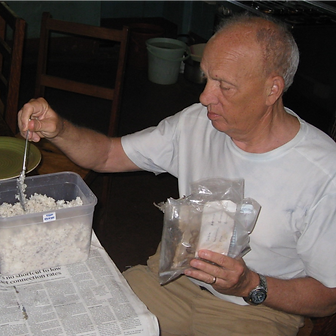
OUR HISTORY

Dr. John Sands
As a retired surgeon from the U.S. Navy, Dr. John Sands was spending time volunteering in a hospital in Kenya. After seeing patient after patient suffer from malnutrition, Dr. John Sands asked Florence Oyosi what the cause of all this malnutrition was. Much to the surprise of Dr. John Sands, Florence took him to a maize field covered in a purple flower. Florence explained the effects of Striga. From that moment, Dr. John Sands knew he could not solve the problem of malnutrition in the hospital, rather it required work in the field.
2007
Brothers Team Up
Once Dr. John Sands returned home, he knew he had to help find a solution. Immediately, he reached out to his brother, Dr. David Sands, a plant pathologist at Montana State University. Using technology he had already been working on, the plant pathologist began to work directly with Striga to find a solution.

2008

African Partnerships
A partnership formed with Florence Oyosi, a long-time friend of Dr. John Sands, and Sila Nzioki, a plant pathologist at the Kenya Agriculture and Livestock Organization (KALRO). Together, they developed the technology originally created at Montana State University. Field tests were conducted to see the effectiveness of FOXY T14 on Striga.
2008

2014:
PROOF OF CONCEPT
In 2013, the Toothpick Project (through Montana State Univeristy) received a Grand Challenges and Exploration Grant from the Bill and Melinda Gates Foundation to conduct proof of concept trials in Western Kenya.
COMMERCIALIZING
In 2018, 13 scientists were trained from 12 different countries in this technology. From this training, these scientists have begun isolating strains of FOXY in their own country. In addition, the Toothpick Company Limited was founded in Kenya. Today, the Toothpick Project continues to research and work with the scientists to allow its technology to fight Striga in various African countries.
TODAY
In 2018, 13 scientists were trained from 12 different countries in this technology. From this training, these scientists have begun isolating strains of FOXY in their own country. In addition, the Toothpick Company Limited was founded in Kenya. Today, the Toothpick Project continues to research and work with the scientists to allow its technology to fight Striga in various African countries.

